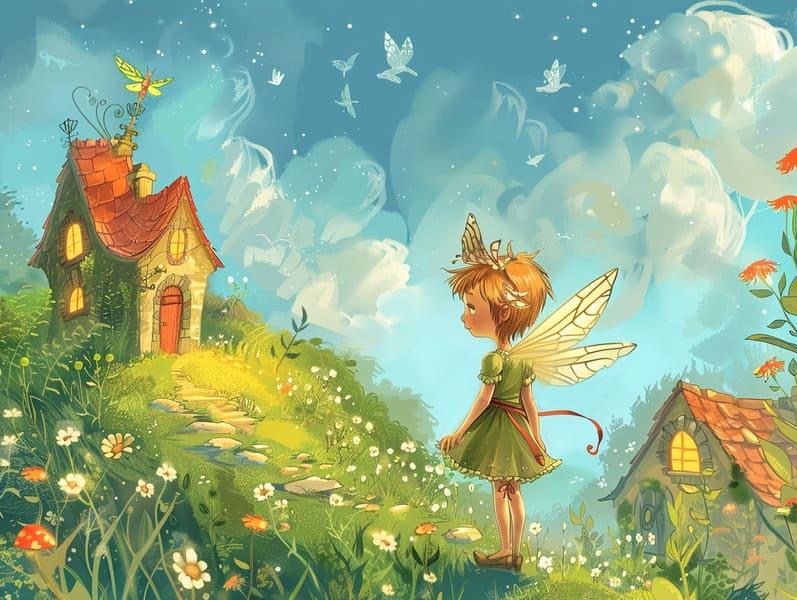Embracing the Joy of Bedtime Adventures: Building Beloved Occasions with Your Little Ones
Embracing the Joy of Bedtime Adventures: Building Beloved Occasions with Your Little Ones
Blog Article

Nightfall is a special time for moms and dads with their little ones. It’s a chance to ease into rest, hug close, and revel in the wonder of stories.
For lifetimes, children's bedtime stories have been a treasured habit, offering more than just a way to drift off. They provide an prospect for connection, discovery, and fueling imagination.
Why Bedtime Stories Matter
Evening stories for little ones are more than just a way to close the day. They play a key role in a child’s growth and in reinforcing the adult-child rapport. Here’s why they are beneficial:
1. Closeness Moments: Storytime before sleep builds a special moment of connection between families. It’s a moment of proximity that helps children feel cherished and secure.
2. Language Acquisition: Listening to stories helps children develop their speech skills. They learn new phrases, understand language rules, and boost their auditory and understanding abilities.
3. Creative Thinking: Stories for kids transport them to enchanted worlds, promoting imagination. They imagine characters, settings, and adventures, which sparks their innovation.
4. Emotional Intelligence: Kids' tales often feature characters facing challenges and emotions. These plots help kids recognize and manage their own feelings, enhancing emotional intelligence.
5. Mental Development: Being read a tale helps children develop mental engagement, remembrance, and reasoning skills. They improve to follow narratives, remember pieces, and foresee consequences.
Making Bedtime Stories a Nightly Ritual
Developing a night-time practice that features narrating bedtime stories is simple and worthwhile. Here’s how to create a cherished part of your sleep-time routine:
1. Choose a Comfortable Spot: Pick a quiet place where you and your child can cuddle without disturbances. A relaxing bed or a snug reading nook works well.
2. Set a Regular Time: Pick a regular time each night for bedtime reading. Routine helps children be prepared and makes the practice more sustainable.
3. Choose Suitable Stories: Choose tales that suit your child’s age. Younger children might be drawn to books with pictures with clear stories, while grown children may prefer detailed stories with more complicated tales.
4. Animate the Tale: Make the tale become real by trying different voices for characters, adding noises, and inviting your child to engage. Ask questions about the story to involve them.
5. Set a Relaxing Mood: Adjust the lights, use hushed tones, and create a calming environment to help your child calm down.
Where to Locate Bedtime Stories
There are endless places to look where you can find perfect bedtime stories for children. Here are some options to consider:
1. Children’s Literature: Try your community library or bookstore to find a great selection of bedtime stories for kids. Perusing the options together can be a enjoyable activity that also permits children to select stories that appeal to them.
2. Internet Resources: There are many online platforms that offer free bedtime stories. Sites like online story sites provide a variety of short stories for kids that you can print out. These options are great for finding new and diverse stories without expense.
3. Story Apps and Audiobooks: For nights when you’re too fatigued to read, explore audiobooks or storytelling apps. These can provide a relaxing voice to read your child a story, ensuring they still get their bedtime story fix. Apps often offer engaging components that can involve them further.
4. Tailored Stories: Make your own stories tailored to your child’s interests. Personalized stories can be especially engaging and meaningful. You can get your child in the narration process, making them a part of the adventure.
Perks of Short Stories
Short bedtime stories are particularly great for bedtime. They provide all the good points of longer stories but are more concise, making them perfect for relaxing before sleep. Here’s why short stories are a ideal choice:
1. Simple to Understand: Compact stories are clear and easy for kids to get, even after a long day. They can speedily grasp the narrative and enjoy the story without getting lost.
2. Immediate Attention: Brief tales immediately engage children, keeping their engagement and curiosity. This makes them wonderful for keeping bedtime routines effective yet enjoyable.
3. Diverse Options: Short stories provide for variety in your bedtime tales. You can opt for a different story each night, keeping the custom varied and exciting for your child.
4. Saves Time: For busy parents, short stories are a time-efficient way to ensure children still get their nightly dose of storytelling. They fit well into a crowded schedule while still offering the full good points of a bedtime story.
The Delight of "Read Me a Story"
The simple phrase, “Read me a book,” can awesome site open a world of magic for children. Agreeing to this request not only caters to a child’s wish for attention and engagement but also forms lasting experiences. Here’s why it’s special:
1. Tie: Reading aloud to your child strengthens a deep emotional attachment. It’s a time for togetherness, sharing, and bonding.
2. Legacy: Building a bedtime story custom creates a treasured tradition that children anticipate every night. It’s a routine that can be transferred through generations.
3. Learning and Growing Together: As you read aloud, you’ll observe your child’s growth and maturation. Their queries, reactions, and understanding of the stories progress, offering insights into their developing minds.
4. Safe Space: Bedtime stories provide a safe space for children to navigate emotions, face fears, and find comfort in the familiar presence of a parent.
Conclusion
Kids’ bedtime stories are a valuable tool for supporting a child’s maturation and developing unforgettable experiences of bonding.